Spalling: The Effect High Heat Has on Concrete and 5 Steps for Restoration
Restorer’s Digest
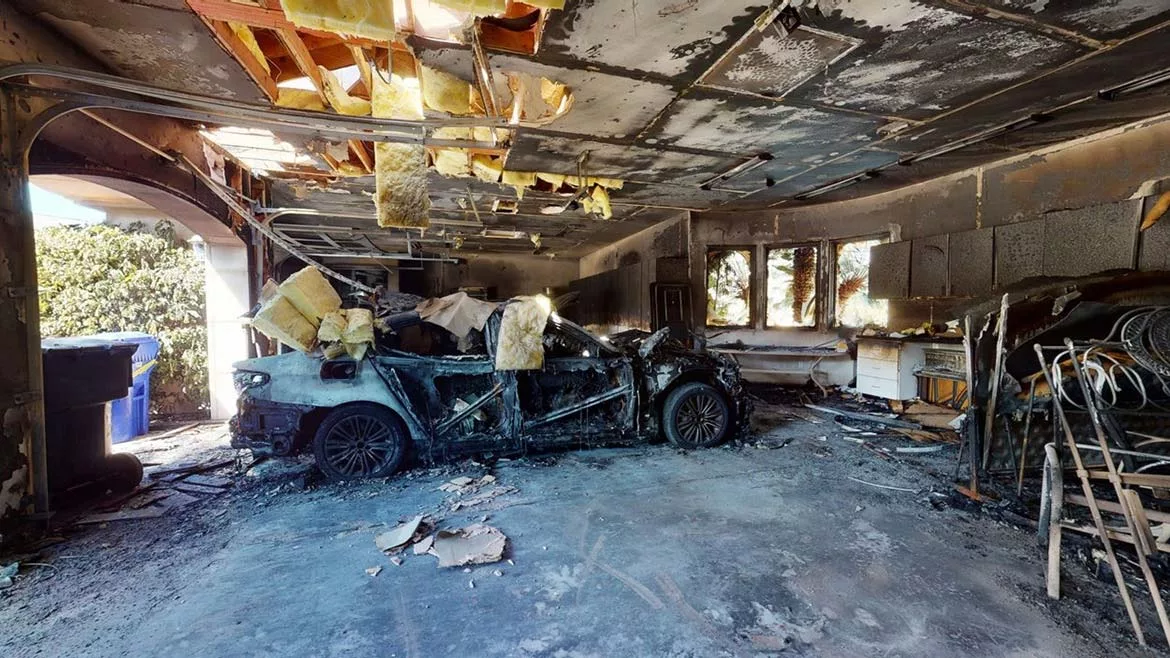
Garage and vehicle fires create high temperatures that can severely damage exposed concrete.
Photo credit: Sean Scott.
When buildings are damaged or destroyed by fire, it is not uncommon to see the surfaces of exposed concrete or masonry exhibit scarring, pitting or cratering. This phenomenon is known as spalling.
Although spalling can be caused by moisture intrusion, improper placement of reinforcing steel, freeze-thaw cycles, improper concrete finishing and other factors, the mechanism behind heat-induced spalling is simple.
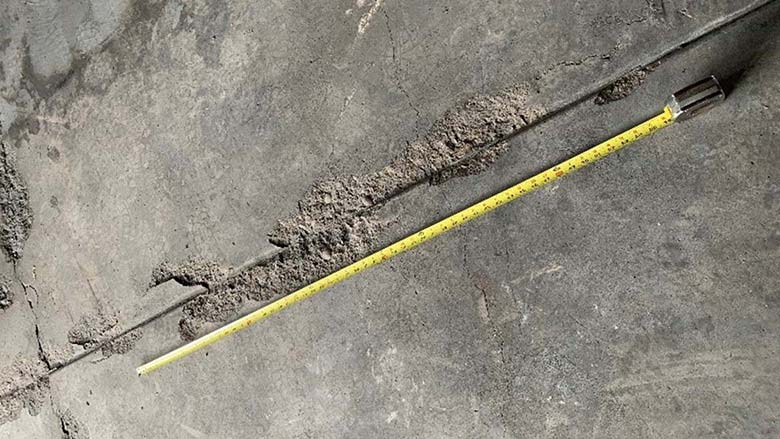
When concrete is exposed to temperatures above 212° F (the boiling point of water), the moisture in the concrete turns to steam. If the temperature rises more rapidly than the steam can escape through the concrete matrix, the rising pressures exceed the strength of the concrete and it begins to break apart and spall. Moisture content is one of the critical factors influencing spalling and the degree to which concrete surfaces may be affected.
In addition, most common aggregates, such as sand, contain a high level of quartz. Quartz expands steadily when heated up to 573° F, at which time it undergoes a sudden expansion. This expansion, coupled with the shrinkage of the Portland cement due to moisture loss, can produce severe and sometimes explosive spalling. Laboratory studies have shown that even the most fire-resistant concrete begins to break down at temperatures above 900° F.[1]
The physical appearance of spalling may also include striated lines or surface cracks (sometimes referred to as “spider web cracks”), discoloration, or a rough texture to the concrete.
Spalling is commonly seen in homes and buildings destroyed by wildfires and in garage fires where vehicles or large amounts of combustible fuels exist such as personal property, flammable liquids, lumber, etc. Given enough fuel, structure fires can generate intense heat that, in some cases, can exceed 2,500° F.
The severity of spalling depends on the moisture content of the concrete, intensity of the heat, timing of when the application of water to suppress the fire is introduced, and other factors.
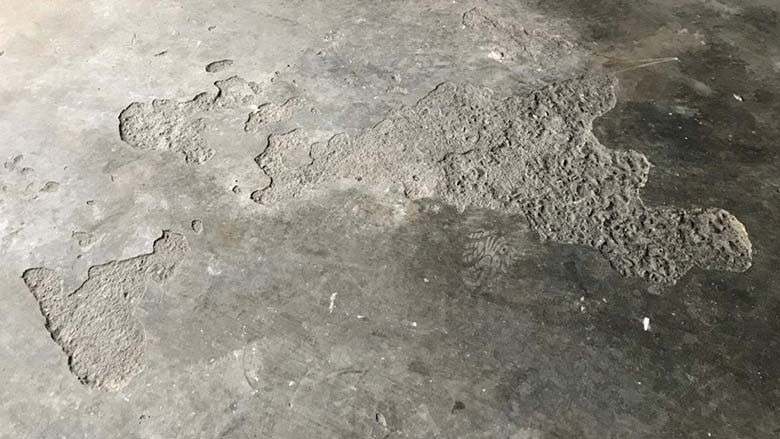
Whether or not concrete will spall when exposed to heat depends on the complex interaction of the composition of the masonry or concrete material, temperature and temperature change, pressure on the concrete, and site conditions.
If the concrete is “green,” meaning recently poured, it is more susceptible to spalling because its water content is higher than concrete that has cured.
If the concrete is reinforced with rebar, it may also be more susceptible to spalling because applied heat is absorbed at different rates by the metal and by the surrounding masonry; the metal heats faster and expands, putting pressure on the concrete that may cause it to fracture. All types of concrete, whether poured in place, precast, reinforced or post-tensioned, are subject to spalling.
Addressing Spalled Concrete in Fire Restoration
If you encounter heat-induced spalling, especially in situations where structural concrete beams, posts or walls are involved, you may need to get a structural engineer involved to determine the extent of damage and a corrective course of action to repair the damage. In some cases, this may include:
- Forensic testing of the concrete and any exposed steel
- Core sampling
- Ground penetrating radar surveys (for post-tension slabs)
- Schmidt hammer tests (to test the compressive strength of the concrete)
- Calcium chloride tests, and so forth
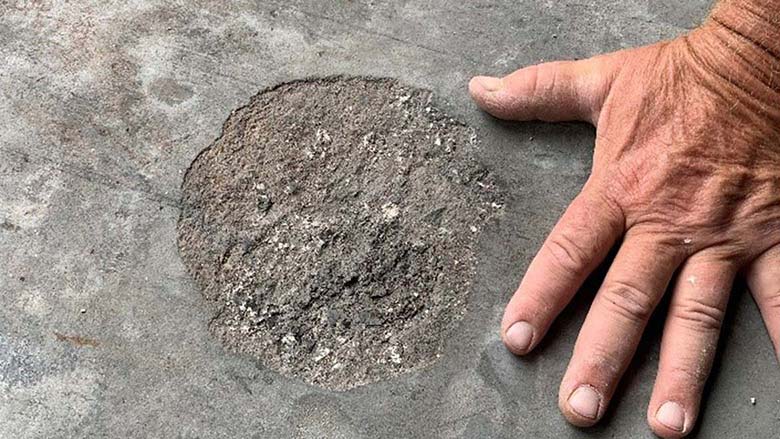
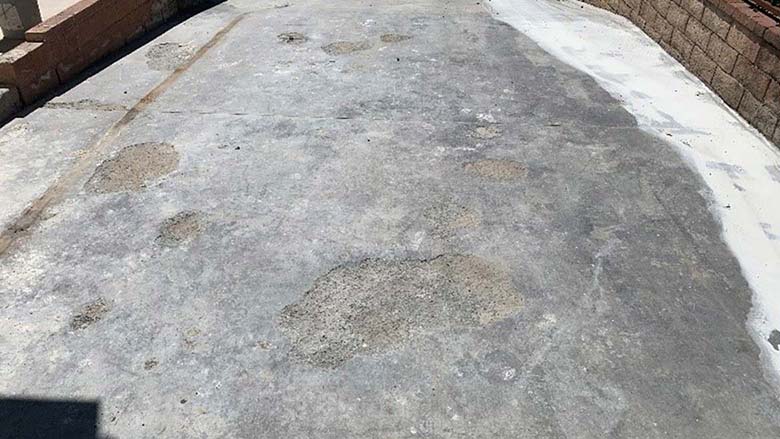
The costs for extensive testing, and attempts at cleaning or restoration, can be very expensive. So, in some cases, the cost of replacement may be a more economically viable solution.
Decorative, colored or stamped concrete can be very difficult to repair and ultimately match. In cases where the concrete is damaged beyond repair, removal and replacement will likely be necessary. Here are a few steps often taken to repair a spalled concrete floor in a typical residential garage:
- Clean and/or power wash the surface area to remove soot, ash and debris. Keep in mind that the residues and byproducts left behind after a fire can be extremely toxic, so be sure to capture and properly dispose of any runoff water, cleansers or chemicals used to clean the surfaces. Do not allow the runoff to enter storm drains, streets or curb gutters. Some jurisdictions impose severe penalties against contractors who allow cleaning chemicals or water runoff to enter the sewer or storm drain systems.
- Properly prepare the spalled concrete surface by grinding or media blasting to remove any loose concrete from the surface area. Note: Media blasting and grinding concrete will generate large amounts of silica dust, which is a known carcinogen, so be sure to set up proper environmental controls and have all workers wear proper (personal protective equipment) PPE.
- Repair the spalled areas with an approved concrete resurfacing product recommended by a concrete repair expert or structural engineer.
- If the concrete is to remain exposed when finished, an epoxy coating may be necessary in order to give the surface a clean, uniform appearance. Keep in mind that if the surface of the concrete is not properly prepared, loosely adhered concrete fragments or aggregate can become dislodged and break through the epoxy coating surface.
- It is relatively rare to see spalling in structure fires where flooring such as tile, stone or wood plank is installed, as these types of floor coverings can insulate concrete surfaces from the intensity of the heat.
[1] “Defining and Recognizing the Effects of Concrete Spalling,” National Fire Academy, Emmitsburg, MD (1982)
Looking for a reprint of this article?
From high-res PDFs to custom plaques, order your copy today!








